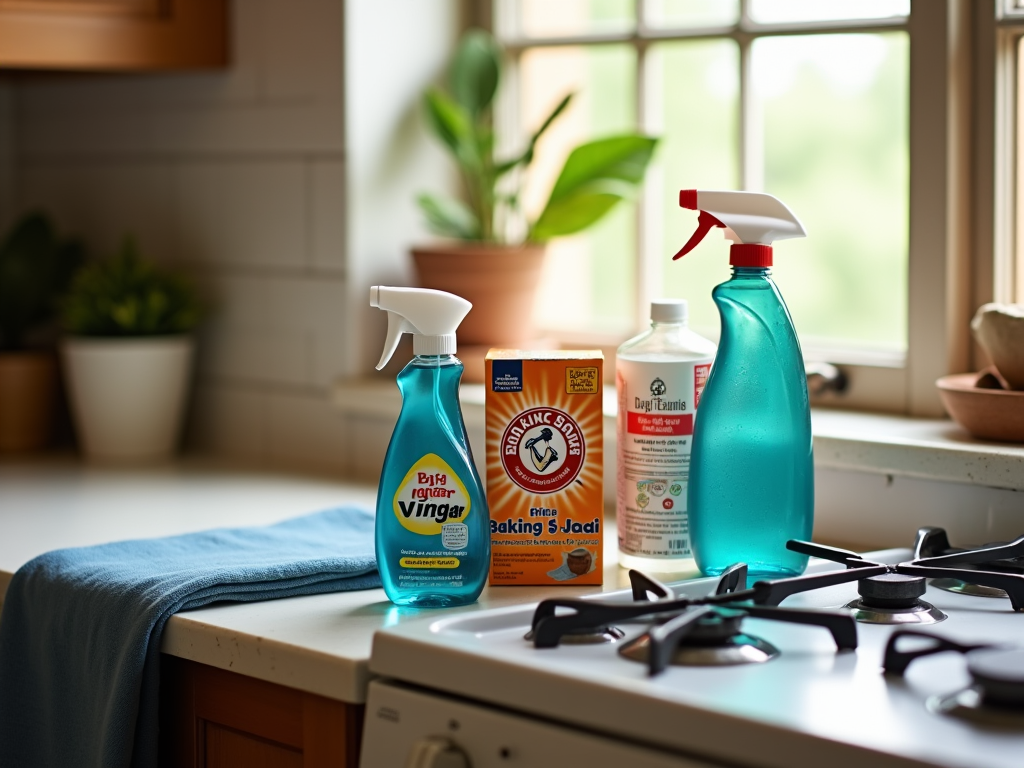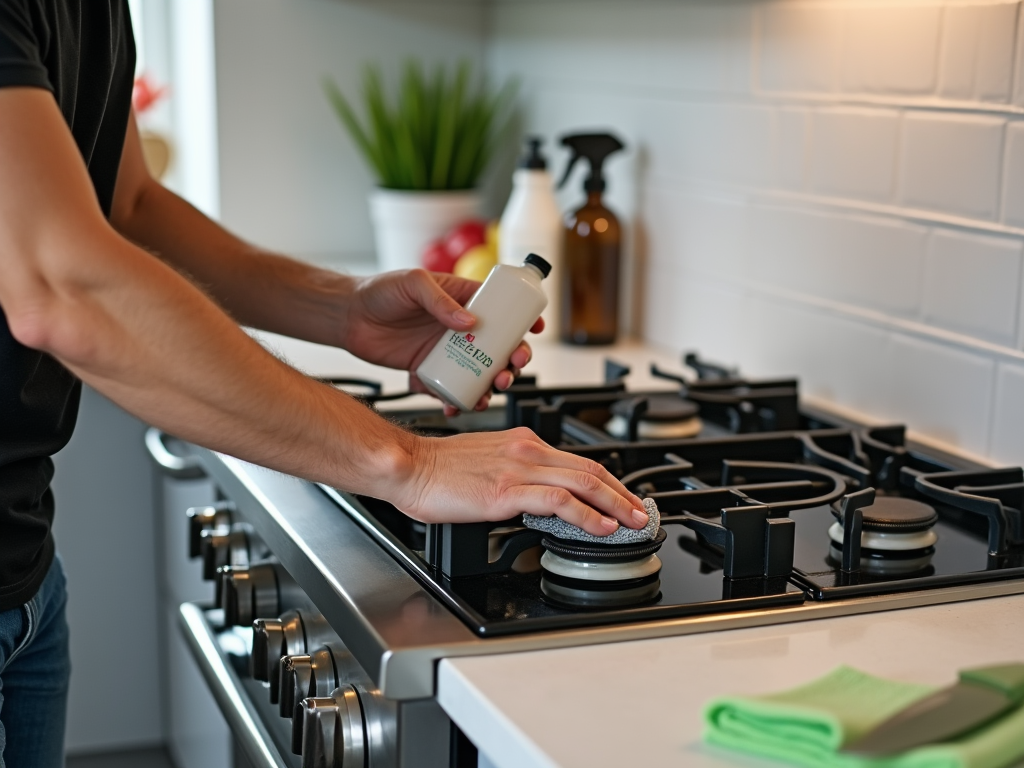Stovetops can quickly become a hotspot for stubborn grease and stains, diminishing the shine of your kitchen. Regular cleaning is crucial to maintain both hygiene and aesthetics. This guide will take you through various steps on how to effectively clean your stovetop and ensure it stays grease-free and sparkling.
Understanding Your Stovetop Type

Before diving into cleaning, it is essential to know your stovetop type as each requires a different cleaning approach. The common stovetops include gas, electric, and induction.
Gas stovetops typically have removable parts like burners and grates, making them slightly more work to clean. Electric stovetops may have coiled or flat heating elements, each demanding specific attention. Induction stovetops are often flat and smooth, which simplifies the cleaning process, but they require caution to avoid scratching. Taking note of your stovetop type ensures that you use the appropriate cleaning methods and products for the best results. Avoid using harsh chemicals on your stovetop to prevent potential damage, and always follow manufacturer instructions when available.
Essential Cleaning Supplies

Stocking up on the right cleaning supplies will make your stovetop maintenance more efficient and effective. Here is a list of essential cleaning items you should have on hand:
- Dish soap – helps break down grease.
- Baking soda – acts as a gentle abrasive.
- White vinegar – effective for cutting through grease.
- Microfiber cloths – ideal for wiping without leaving lint.
- Sponge or soft scrubber – for scrubbing stains gently.
With these supplies ready, you can tackle tough grease and stains without scratching or causing damage to your stovetop surface. Always ensure to use non-abrasive tools for smooth surfaces to maintain their shine.
Once you’ve gathered your supplies, it is time to prepare for cleaning. Begin by ensuring your stovetop is completely cool to the touch to avoid burns or heat damage during the cleaning process. Remove any detachable parts such as grates or burner caps from gas stovetops. Soak these parts in hot, soapy water to loosen grease and residual food particles while you clean the stovetop surface. If you have an electric stove, remove the coils if possible, and clean them separately. Induction stovetops don’t have removable parts, so you can dive right into cleaning those. This preparation sets the stage for an efficient cleaning process, as you won’t hinder your progress by dealing with obstacles on the stovetop.
Cleaning Process
With everything prepared, follow these steps for a thorough clean: 1. Sprinkle baking soda across the dirty or stained areas of the stovetop. It will act as a natural abrasive to tackle dirt without scratching surfaces. 2. Follow the baking soda with a spray of white vinegar. This combination will fizz, helping to lift stubborn stains and built-up grease. 3. Let the mixture sit for about 10 to 15 minutes to allow it to penetrate tough stains. 4. Use a damp microfiber cloth to gently scrub the surface in circular motions. For tougher stains, use a sponge or soft scrubber. 5. Rinse the cloth or sponge frequently to avoid spreading grease and grime back onto the stovetop. This method is both effective and environmentally friendly. Most importantly, it ensures that the tools and products used are appropriate for a comprehensive clean.
Post-Cleaning Steps
After cleaning, it’s crucial to ensure that everything is dry and properly arranged. Start by wiping the entire stovetop surface with a dry microfiber cloth to prevent water spots and streaks. If you removed any parts earlier, ensure they are thoroughly rinsed and dried before reassembling. With gas stovetops, carefully place grates and burners back in their correct positions. Complete the process by doing a final gentle wipe with a slightly damp cloth and a few drops of lemon or essential oil on the cloth for a fresh and pleasant scent. This step adds the finishing touch to your sparkling clean stovetop.
Conclusion
Keeping your stovetop clean and free from grease and stains not only improves the appearance of your kitchen but also enhances your cooking experience. By regularly following the outlined cleaning process and using the right supplies, you’ll ensure your stovetop remains as new as the day it was installed. Remember, consistency is key; regular maintenance prevents build-up, making future cleaning sessions a breeze.
Frequently Asked Questions
1. How often should I clean my stovetop?
It’s best to give your stovetop a quick clean after each use to prevent grease build-up. For a thorough clean, aim to do it once a week or as needed, depending on how frequently you cook.
2. Can I use harsh chemicals to clean stubborn stains?
It’s advisable to avoid harsh chemicals. They can damage the stovetop surface over time, particularly in induction and glass-ceramic surfaces. Instead, opt for baking soda and vinegar as a more gentle and eco-friendly solution.
3. What do I do if my stovetop shows signs of rust?
If you notice rust on your stovetop, it’s essential to address it promptly. Clean gently using a paste of baking soda and a little water, then apply it to the rust spots. Rinse and dry thoroughly.
4. How do I handle burnt-on food residue?
For burnt-on residue, allow the baking soda and vinegar mixture to sit longer, using extra vinegar to help lift the residue. Using a plastic scraper can also help remove tough spots without scratching.
5. Are there specific supplies I shouldn’t use on my stovetop?
Yes, avoid using steel wool pads or harsh scrubbers as they can scratch and damage your stovetop surface. Stick to non-abrasive sponges, soft cloths, and designated stovetop cleaners when necessary.
